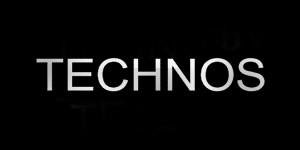
Technos brand was founded in Canada in the early 1980s by Nil Parent and Pierre Guilmette. The company became famous with the release of Technos Acxel resynthesizer in 1987. The instrument reminds of a sampler, but it works quite differently. While samplers used analog-to-digital conversion, Axcel "broke" the signal into a certain number of sine waves, each of which could be subsequently processed beyond recognition. This method of sound generation was called resynthesis (re-synthèse). Pierre Guilmette invented the concept, and Nil was responsible for the design. The essence of the idea was in sound sampling and further extracting its harmonic content with the help of the so-called Acxelizer.
In 2008, the Acxel II project was launched by the Canadian company Idarca-Audio Inc. It was also developed by Pierre and was meant to be an evolutionary step in the history of this unusual instrument. The improved version included additional signal processing and provided a higher level of performance. However, due to the lack of sufficient funds and sponsorship, Idarca-Audio went bankrupt in 2010, and not a single instrument was released.
Using FFT (Fast Fourier Transform) analysis, the sound, going through Acxel, got broken into a certain number of sine waves (up to 1024). The processing could increase or decrease the pitch of the waves without affecting the length parameter, and also perform other functions inherent in the samplers, but, again, without affecting the length.
Unlike samplers, Acxel could synthesize sound from scratch: the same sine oscillators (1024) that participated in the process of resynthesis made the additive synthesis possible as well. The wide range of parameters and control features was offered for both sound analysis and for creating sound from scratch.
The word "acxel" itself is derived from the phrase "acoustical element", created by analogy with the word pixel - "picture element".
Acxel consisted of 2 components: a graphic console Grapher and a rackmount module Solitary, which included hardware sections of synthesis and analysis. Instead of LCD or CRT screen, Acxel offered an interesting solution - 2114 LED indicators were placed behind conductive sensors. The same solution was applied to another brand instrument - Technos 16 Pi, the predecessor of Acxel, which included a keyboard, but was limited to 64 oscillators.
During the production period from 1987 to 1990, only 35 Acxel units were sold – though they were intended to replace traditional samplers. Acxel didn’t bring commercial success due to uncompetitive cost, much higher than the cost of market alternatives, as well as relative complexity in use. Nevertheless, the concept of resynthesis continues to exist in such instruments as VirSyn's Cube, Camel Audio's Cameleon 5000 and Image-Line's Harmor.

